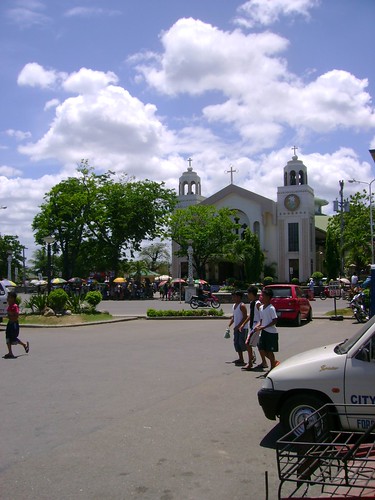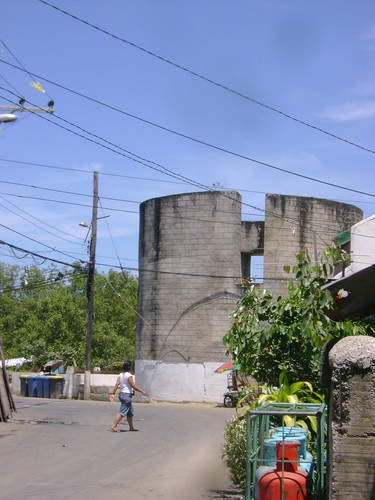
The resilient Mandauehanon's rebuilt their centuries old house of prayer after the destructive fire
Prehispanic native tradition had an unwritten law, name places after shrubberies. Mandaue was named after a plant [Mantawi] said to have grown [or crawled] in abundance there. The Kastila who came, saw and conquered warped the indigenous name to fit their talking.
Mandaue is home to the finest wood furniture makers in the country, which explains why they have a carpenter for a patron saint. So admired was their wood products that they were exported to Spain in great quantities! Their salt was also well known for its exceptional quality - however, unlike the wood products which still big to this day, the salt making is a shadow of what it used to be, it's an endangered trade now limited to a barrio [reminds me of the Sampaguitas of Tunasan San Pedro!].
San Jose parish, a national shrine, is home to the only life-size carved depiction of the last supper in Asia, el Senor de Cena. Miraculously spared during the fire that partially destroyed the church in 2001.
The extent of the damage was big; it destroyed the centuries old sacristy and icons. Brass plaques attached to the walls now offers a tribute to all the generous donations both monetary and labor that paved the way for its reconstruction.
 [/caption]
[/caption]the mighty tower
One Fray Bermejo successfully defended the southern places of Cebu, he was called upon to devise a series of protective measures to defeat the Moro raiders - and his approach has succeeded, inspiring the series of defense towers from Daang Bantayan to Mandaue. One of this defense structures is the mighty Bantayan sa Hari [the city's great symbol] armed with cannons and manned 24/7, and this ancient defense system gave a clear break for Catholicism to spread. Unfortunately, this once magnificent watchtower, symbol of Spain's colonial authority and purpose of putting all natives under the bells is in a depressing condition, left to deteriorate, unkindly vandalized, both citizens and government seem to have forgotten about its crucial role in Sugbuanon Christianity, history and culture.
The tower is more than 1 kilometers away from the church of Sn. Jose, this solid watchtower itself is pretty close to the waters now, its situated almost under the old bridge that Macoy built. The tower is perfectly aligned with the church in a straight path [now a concrete pathway ending at the oil depo] with the population right next to it. This could only mean that the church was built away from the shores to protect it from the raiders, a signal from the bantayan would've given sufficient time to defend their sacred Iglesia and tiny town.
[

The Beautiful Presidencia
The Presidencia is another interesting structure, its located in front of San Jose. It was built in the 1937 and was inaugurated by the legendary Cebuano Governor S. Cabahug. It is said that Katipuneros fought hard to win it from the Spaniards in '89 where the Presidencia now stands, they vowed not to desert it again, and the hangover wasn't over yet when an American ship demanded its surrender in 1901. The Spanish structure was destroyed by the Americans, the Presidencia we today was only built in '37.
---
Mantawi Festival is celebrated on the 1st week of May, I'll try to catch it!



No comments:
Post a Comment